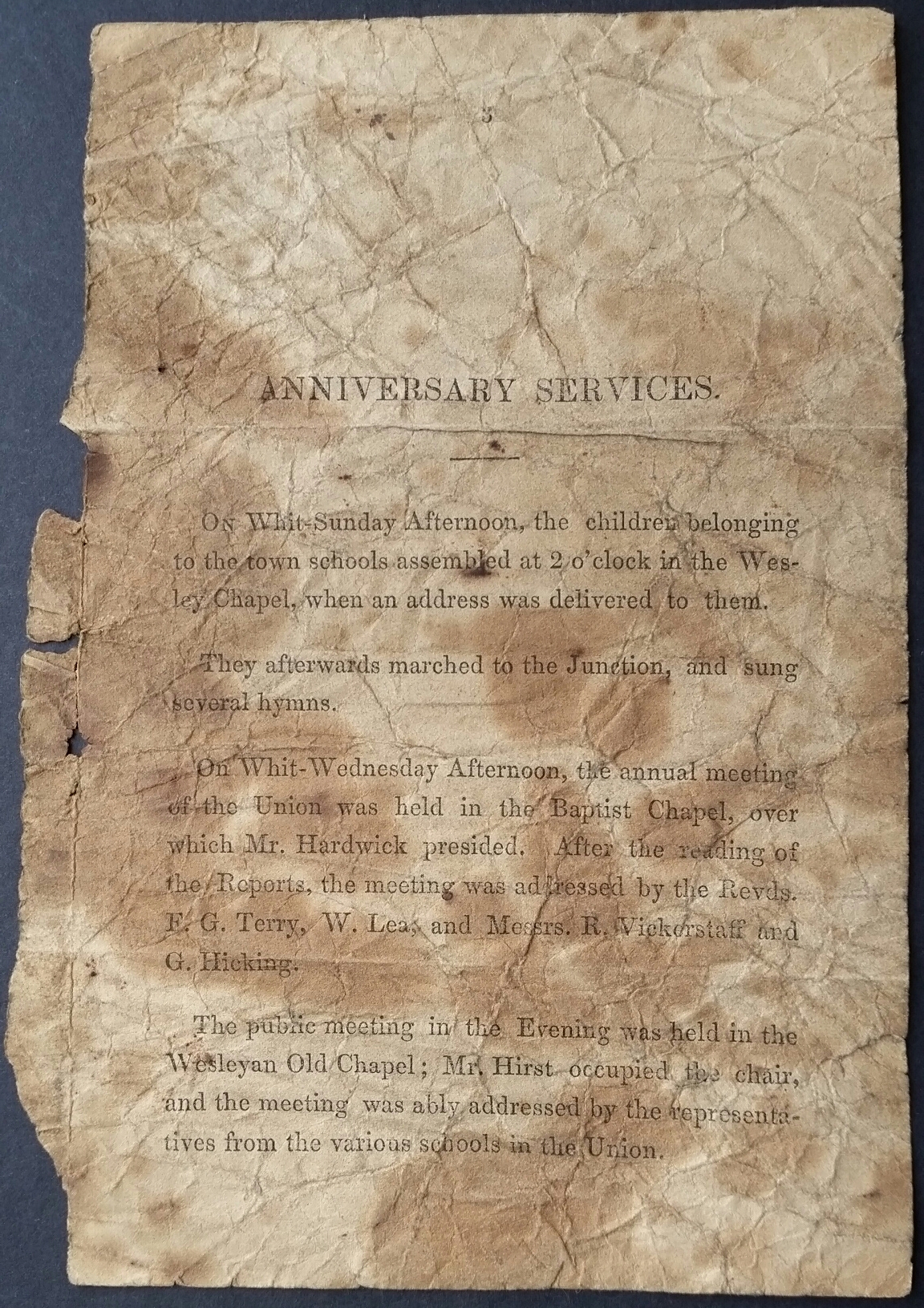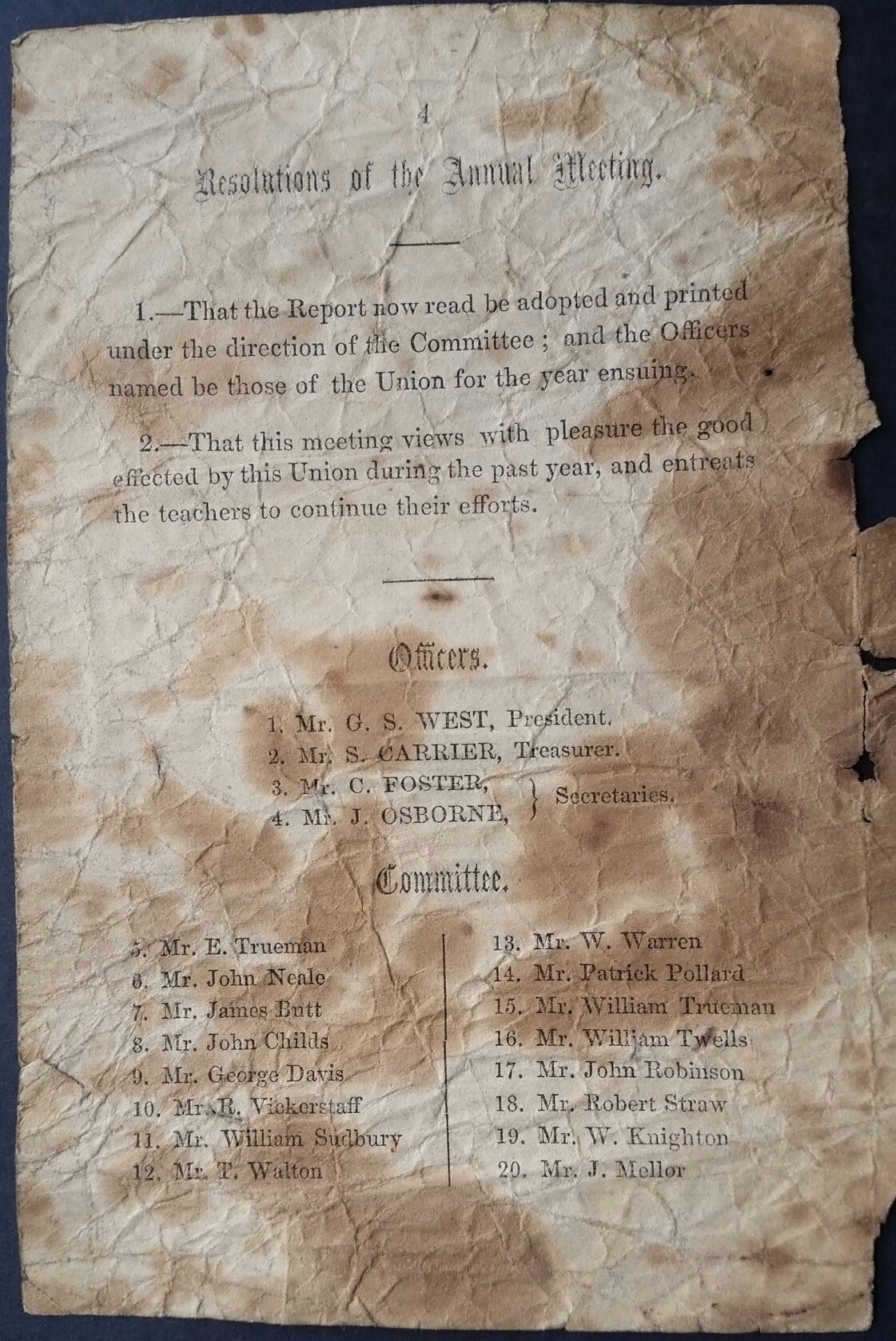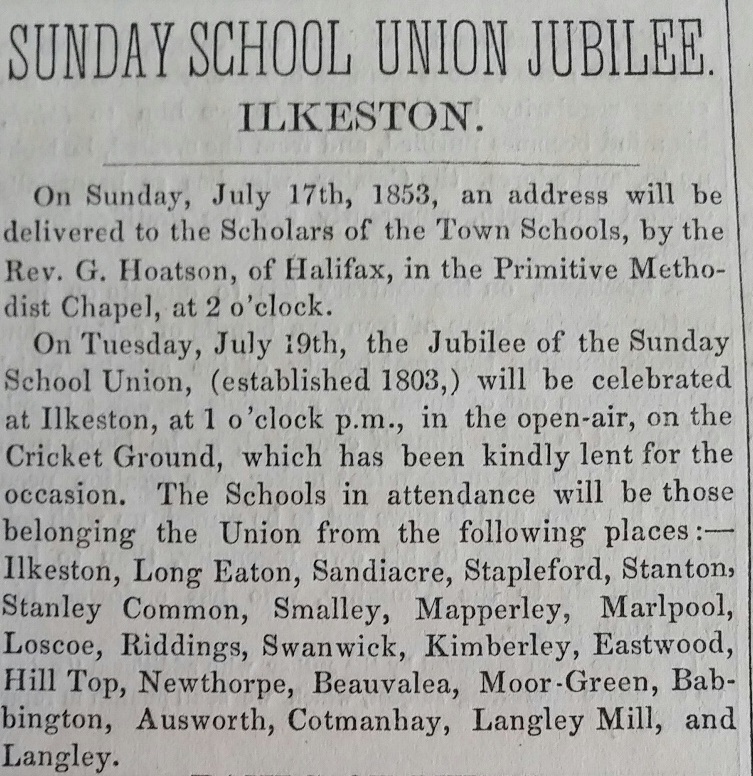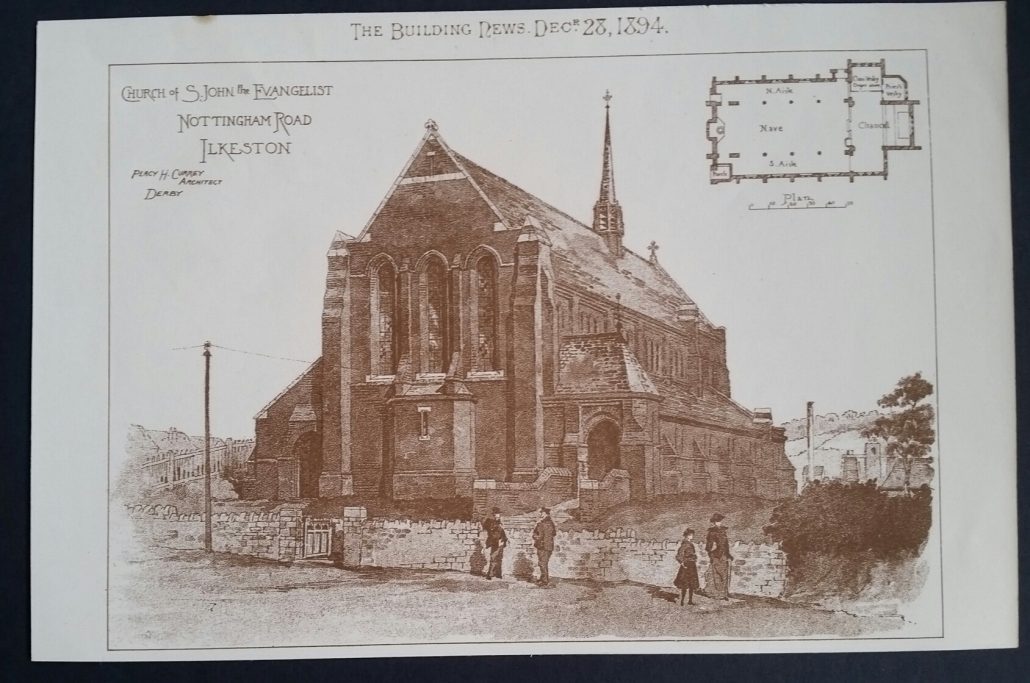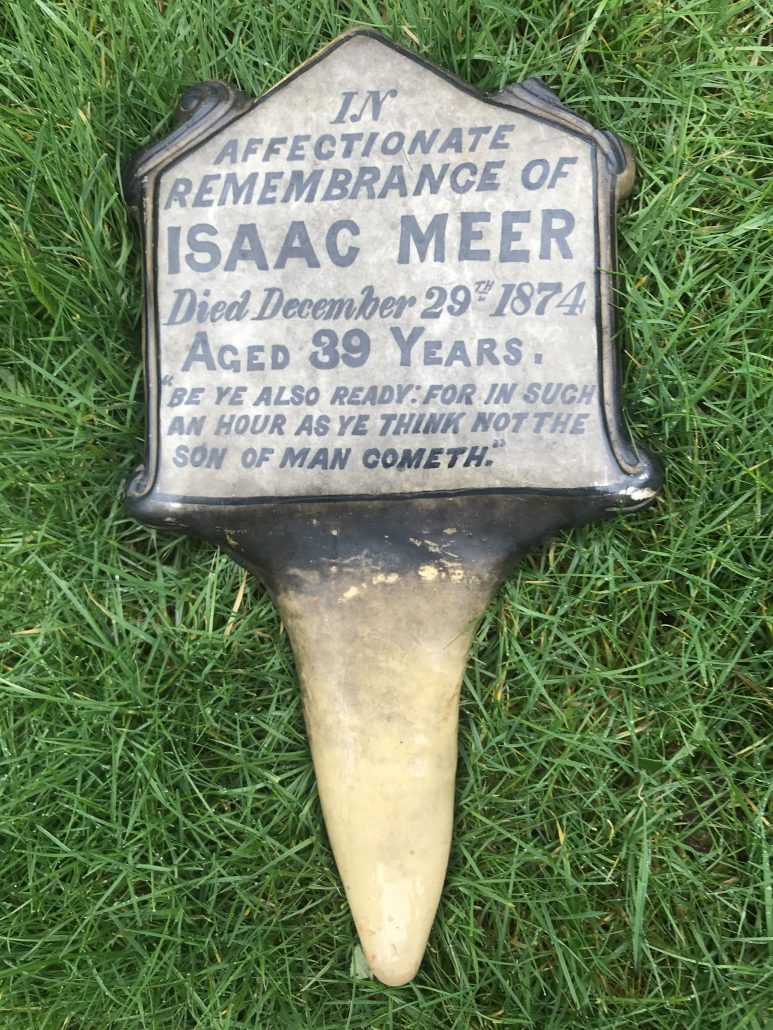Sunday School Union
I’ve attached an image of two pages from a document that I’m fairly certain relates to Ilkeston, despite not naming Ilkeston on it. It came from John Robinson’s papers and was wrapped around a small object to protect it, hence why it’s badly creased – I suppose it shouldn’t exist, as it had already effectively been discarded.
It’s pages 3 and 4 of a larger document and relates to the Sunday School Union.
Although I cannot tie any of the Reverends’ names to Ilkeston, several committee members seem to have been prominent tradesmen in the town, such as Geo. S West, the president, who had a linen and woollen drapery business in the market place; Patrick Pollard, a committee member who was a brazier and tinner, also of the market place; William Twells, committee member, butcher and grazier of Bath Street; and John Robinson, committee member and my ancestor. There is also a mention of the children marching to the Junction on Whit Sunday afternoon to sing several hymns – I believe the Junction was Lower Market Place.
Illustration from The Building News, dated 23rd December 1894, showing the newly built St. John’s Church on Nottingham Road.
I also have a very large photograph of the Primitive Methodist band which my old relative said was taken outside the house of Isaac Potter who headed up the band. It’s predominantly the Shaw, Knighton and Potter men. The house was behind 99 Bath Street (opposite Woolworths) and accessed via an entry by 99 Bath Street, but I’ve never been able to find it on any maps. You might remember 99 Bath Street as the chip shop that only opened odd days, always very busy Saturday lunchtimes, and had no name above it hence we knew it as “99s”. If you had a knife and fork that matched, or matching plate/cup, you were lucky. Also the waitresses seemed to be all well into their
70s, at least. Quite an experience. Would it be worth me sending an image of the photo, with names?
and Death
As you enter the old Ilkeston General Cemetery in Stanton Road and stand at the gates, in the far left-hand corner lies the grave of Isaac Meer. Its rectangular perimeter stones are broken and scattered, and the site is overgrown with grass and bushes.
Isaac was born in Ilkeston on January 31st 1836, the son of Isaac and Mary (nee Riley). His father was a life-long shoemaker/cordwainer though Isaac junior worked as a coal miner. On January 24th, 1859, at Ilkeston Independent Chapel, he married Harriett Tunnicliffe, the only surviving daughter of house-painter William and Mary (nee Rogers), of Moors Bridge Lane (later Derby Road). Six weeks later Harriett died in childbirth, on March 7th … the unnamed son died at the same time, having enjoyed life for only 20 minutes. They were buried at St. Mary’s Church three days later.
Seven months after this, Isaac married his second wife, Sarah Wardle, at St. Mary’s Church, on October 17th. Born in 1831, Sarah was the only daughter of labourer Joseph and Hannah (nee Straw), and at the time of her marriage, had a two-year-old son, Joseph, who initially became a ‘Meer’.
The couple thenceforward lived together in Derby Road and had seven children between 1860 and 1874. They may have had more except that Isaac died on December 29th, 1874, at his home….. of ‘congestion of the liver’.
Left is the grave marker placed on Isaac’s resting place.
He was registered as aged 39 (!!), and was buried on Sunday afternoon, 3 pm, on January 3rd 1875, …… as described above, in a third class section of the cemetery, his grave costing 8s. with inscriptions … ‘at rest‘ and ‘Be ye also ready: for in such an hour as ye think not the son of man cometh’.
For the remainder of her life (almost !) Isaac’s widow Sarah lived at her home of 11 Derby Road, and for many of those years worked as a nurse and midwife. She died on February 3rd 1922, aged 90, at the home of her youngest child, Elizabeth Ellen Chaplin, in Ripley.
‘Of a kind, genial and lovable disposition’‘ Sarah was a life-long member of the Baptist Chapel in Ilkeston, both at South Street and then at Queen Street. It was therefore fitting that a burial service for her was held at the Queen Street chapel, led by the Rev. Arthur Copley before Sarah was buried in that same grave, in the corner of Stanton Road Cemetery.
Introduction. The Knighton family. Religion … and Death. Travel, Trade and Business. Leisure. School Days. The 1911 Coronation. Post-war Jackson Avenue

